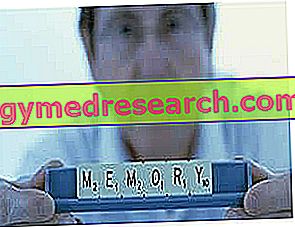Related articles: Headache
Definition
Headache is a pain that affects the cranial region, including the scalp and face. There are many forms: the headache can in fact appear as a primary or secondary pathology to another disorder.
The primary headaches are those forms in which the headache is an autonomous disorder, not linked to other pathologies. The most frequent primary headaches are cluster headache, migraine and tension-type headache. They are not always triggered by specific and easily identifiable causes; in most cases, they are determined by the interaction of several elements, such as incorrect living habits and hormonal or environmental variations. Factors able to trigger the mechanisms underlying the headache include physical and emotional stress, the consumption of certain foods, prolonged fasting, smoking habits, the adoption of incorrect postures, climatic changes and changes in rhythm sleep-wake.
In secondary headaches, on the other hand, headaches derive from a well-defined and precise underlying disease: sinusitis, neuritis or cranial neuralgia, infections and inflammations, vascular malformations, increased intracranial pressure, brain tumors or other mass-effect lesions (eg . hematomas or bleeding). Fever, hypoxia (including mountain sickness), arterial hypertension, dental diseases (eg dysfunction of the temporomandibular joint), head traumas, glaucoma and other vision problems can also cause headaches. Even the consumption or suspension of particular substances such as alcohol, caffeine and certain types of drugs (eg abuse of analgesics or vasodilators) can trigger secondary headaches.
Most common symptoms and signs *
- Halo around the light
- Redness of the face
- blepharoptosis
- dizziness
- Conati
- Conjunctivitis
- Language difficulties
- dysgeusia
- Mood disorders
- Neck pain
- Pain associated with chewing
- Facial pain
- Ocular pain
- Temperature
- phonophobia
- Tingling in the head
- Fotofobia
- photopsias
- Insomnia
- Tearing
- Toothache
- Headache
- Miosi
- Nausea
- Eyes reddened
- Pallor
- Paresthesia
- rhinorrhoea
- scotomas
- Drowsiness
- Fainting
- Double vision
- Blurred vision
- He retched
Further indications
The headache manifests mainly with a pain in the head. Painful crises can be episodic or chronic; in the first case they are sporadic, while when they become chronic the frequency of appearance is high (they occur for at least 15 days a month). In some cases, the pain is modest and easily resolved by adopting small steps. Sometimes, however, crises can be particularly strong and debilitating.
- Tension headache shows persistent pain, but generally mild and bilateral (affects both the right and left sides). It manifests with a constrictive sense localized in the occipital or frontal region. In some cases, however, the symptom is spread throughout the head, giving rise to the so-called "circle" at the head. Attacks often start in the late morning or early afternoon. Tension headache does not affect normal daily activities. Sometimes the pain is accompanied by dizziness, stiffness of the neck and anxious manifestations; it is rarely associated with nausea, vomiting, light or noise nuisance.
- Migraine is often unilateral (affects only one half of the head), initially involving the frontal region above the eye, then also the forehead and temple. It manifests itself with recurrent attacks that can last a few hours or, in the most serious cases, a few days. The pain is intense and pulsating, similar to a hammering that seems to make the head burst. Occasionally, the attack can be preceded and accompanied by a series of reversible neurological symptoms, which constitute the so-called "aura": glare, sparkling flashes of geometric shape (scotomas), obscuration or clouding of the visual field and, in some cases, difficulty expressing, tingling and numbness of an extremity.
- The cluster headache presents with unilateral attacks, very painful and close together (they occur at rather short intervals of time). The pain, in this case, is of the piercing and lancinating type, localized around the eye and the cheekbone, with possible irradiation to the temple, mandible, nose or chin. In some cases, the whole side of the skull is affected by pain. These episodes are associated with other well-defined symptoms: lowering of the eyelid, tearing, irritation of the conjunctiva and flushing of the face. Furthermore, a state of agitation may be associated with it. Unlike migraine, it is almost never accompanied by nausea or vomiting and, in particular, is never associated with the aura.
- As for secondary headaches, some features of head pain depend on the cause. In addition to headaches, for example, symptoms such as fever and vomiting (infections), rhinorrhea (sinusitis), neurological deficits (encephalitis, tumor or other lesion with mass effect), syncope (subarachnoid hemorrhage), irritation of the conjunctiva and others visual disturbances (glaucoma or intracranial hypertension).



